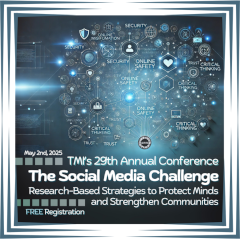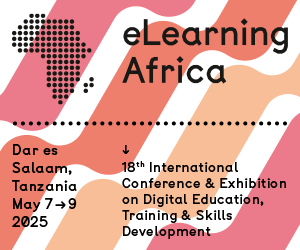How to Regain Learners' Attention
 Groningen (NL), November 2010 - Koos Winnips is a researcher and consultant in the area of educational technology. At Online Educa Berlin, he will present models and results of the use of SMS to increase interaction in large lectures at universities. Than students reported being able to maintain attention for a longer time and being more actively involved during lectures.
Groningen (NL), November 2010 - Koos Winnips is a researcher and consultant in the area of educational technology. At Online Educa Berlin, he will present models and results of the use of SMS to increase interaction in large lectures at universities. Than students reported being able to maintain attention for a longer time and being more actively involved during lectures.
First of all: How do you define a "large lecture", and how long is the normal attention span of a learner?
Koos Winnips: Large lectures in our University are lectures with over 150 students. Some of our lectures include a thousand students. These are done in a cinema, with video being used to transmit the lecture to another cinema room.
Normally, the learners' attention span is twenty to thirty minutes. After that, something would need to happen in a lecture to break it up. Then attention is regained.
Which kind of interaction during a lecture enhances attention instead of
creating disturbance and distraction?
Koos Winnips: As mentioned, after twenty- thirty minutes, something needs to happen to regain the attention of the learners. Maybe the point is that there has to be a disturbance, after which you can refocus. This could be done by using SMS to respond to questions about the lecture's contents.
How can SMS be used constructively in such a context? What are your experiences using SMS?
Koos Winnips: We have now found five models of using SMS to interact during lectures:
Concept tests: as proposed by Mazur (2009), concept tests are challenging multiple- choice questions that are presented after fifteen to twenty minutes of lecturing. After answering the questions, students discuss the questions with their neighbour. At the end of the lecture, students are asked to give their answers again, after which the "correct" answer is given and discussed. Masikunis (2009) used the concept-test model without discussion amongst students. Instead, results were discussed by the lecturer and students immediately after the students had submitted their answers.- Formative testing: responses via SMS can be used to carry out testing during lectures for large groups. Hancock (2010) used personal response systems to write a summative test. A similar process has also been also described for formative testing (Winnips, 2007).
- Interactive tutorials: answering questions via SMS can be used in interactive tutorials (D'Inverno et. al., 2003). A small problem was explained at the start of the tutorial, after which groups of students would walk through it, answering questions at intermediate stages. Based on the answers to the questions, the contents of the tutorials would be changed. In this way, the answers to questions decide which path is followed through the materials, and thus which contents are covered in lectures.
- Group answers: a fourth model has been proposed by Thloaele (2010). Groups of students are asked to discuss their answers to questions first, before answering the question and getting feedback on the answer.
- Entry testing: getting to know the entry knowledge of learners helps better adapt course contents to the learners' level. For learners, entry testing can make it clear if they have a gap in their entry knowledge.
- Open-ended questions: a model that is afforded by using SMS is that of open-ended questions. This makes it possible to ask questions during large lectures. Questions either show up on a separate laptop (with an assistant who screens questions and can pass them on to the lecturer), or the lecturer can build in a dedicated time slot to answer student questions.
Of these models, several were found in the literature, others were derived from practice. So far, results have been studied in two courses. In both of them, SMS was used for concept tests, entry testing, and open-ended questions.
Two first-year university courses were evaluated, one in the Department of Behavioral Sciences (n= 140) and the other in the Department of Law (n=112). Since students had to pay to send SMS messages themselves, a question was whether enough students participated. In total, 62 and 36 percent respectively of the students reacted to nearly all the questions asked.
Students saw the added value, with 67.5% of those from Behavioral Sciences agreeing or fully agreeing that voting during lectures has added value. For Law, 91% agreed on the added value of voting. Open-ended questions were only used in the lectures of Behavioral Sciences, where 62% agreed or fully agreed that it is useful to be able to ask open-ended questions via SMS.
Students reported being able to maintain attention for a longer time (39% and 47% agree) and being more actively involved during lectures (42% and 45% agree).
Though these results are quite positive, whether this has an effect on course marks is doubtful, as students disagree on the statement that reacting via SMS will improve their mark (37% and 30%). A lecturers' worry was that students would be hesitant to react when they had to pay for the SMS messages themselves. Though some students shared this worry, when asked if they didn't answer because of the cost of an SMS message, they disagreed (19% and 34%).
How many teachers are working with this method at your university? Are we talking about individual cases or about a trend?
Koos Winnips: Up to now, this has been used in about ten courses at the University, involving about 3,000 students. Furthermore, the service has been used for promotional activities and conferences.
Nevertheless, using SMS as such is rather old fashioned; the trend is toward using mobile smartphones for interaction. Backchannel tools enable learners to voice their opinion, check up on facts, send summaries to friends, and make sense of information. With web-enabled phones becoming more widespread, it will become easier to interact during lectures. This could make it possible to bring active learning into large classrooms.










